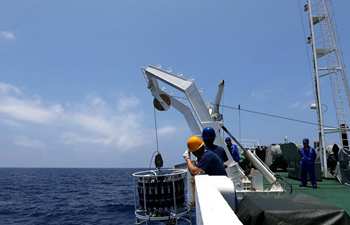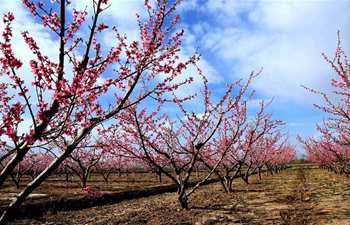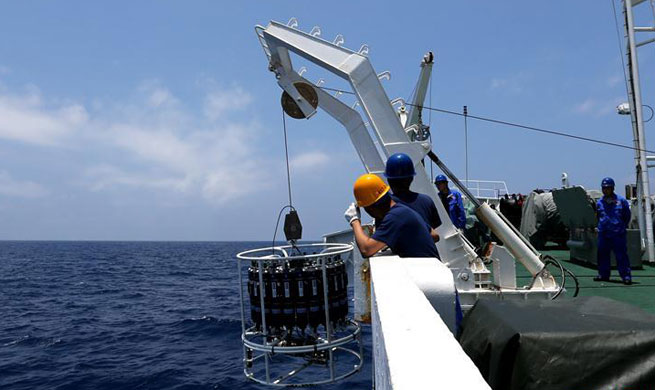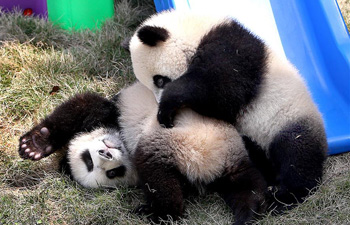by Xinhua writers Xu Ruiqing and Tu Chaohua
SANSHA, Hainan, April 26 (Xinhua) -- Ganquan Island used to be a heaven for seafarers sailing along the ancient maritime silk route as it is one of two islands in the South China Sea that has underground fresh water.
The island has been inhabited by Chinese fishermen for hundreds of years, and a dozen are still living there, but they are outnumbered by other residents: green sea turtles.
Located in the west of China's Xisha archipelago, the island of Ganquan, which literally means sweet spring, is an ideal place for sea turtles due to its fine sandy beach and large mass of coral reef surrounding the island.
In a pool not far from the beach, hundreds of green sea turtles are vying for small fish thrown to them by Li Yanfen, 33, a worker with the local sea turtle preservation station, run by the island's community.
"We have 800 little turtles to take care of," Li said.
Li was a fisherman in the port town of Tanmen in China's southernmost island province of Hainan, more than 300 kilometers from Xisha. He came to Ganquan as a turtle breeder when the preservation station was established in 2013.
"April to October is the breeding season for sea turtles. We patrol the beach daily looking for turtle nests that are too close to the sea, and if we find any, we dig out the eggs and take them to the station," Li said. "If not, high tides will submerge the nests and ruin the eggs."
At the station, the eggs are placed in buckets full of sand, and hatch after 45 to 60 days.
"In the natural environment, the hatching rate of the turtle eggs is about 10 percent, but the rate can be as high as 80 percent at the station," Li said.
Living on fish, the captive turtles can grow to 0.5 to 0.8 kilograms in six months.
"Their shells will be hard enough by that time to guard themselves against their predators such as birds, crabs and fish. When we release them into the sea, their survival rates are much higher," Li said.
In the past four years, Li and his colleagues have bred about 2,000 sea turtles and released more than 1,000 into the sea.
The green sea turtles used to be abundant in Xisha, but due to years of excessive hunting, their numbers dropped drastically.
In 1989, China listed the species under state protection and have since enhanced measures to crack down on the capture and trade of sea turtles and their eggs.
After Sansha city was established in 2012, the city government issued a strict ban on turtle poaching in all areas under its jurisdiction, including Xisha, while educating local fishermen to protect the rare species.
Since then, poaching has plummeted, and local fishermen voluntarily take up the job of turtle protection.
In 2015, the community of Beidao Island of Xisha also set up a turtle preservation station.
Huang Hongbo and his two sons are among the 15 fishermen who have patrolled the island over the past two years to protect the sea turtles.
"If we find turtle nests on the beach, we will set up a wooden sign to alert local fishermen to be careful and not harm them," said Huang, 65, head of the turtle preservation station. "We also patrol along the beach to find strangers who may have come to steal turtle eggs."
Huang said that green turtles often crawl upon the beach at night with the tide.
"Female turtles will choose soft sandy beach, dig out holes with their flippers and then lay eggs inside. The size of an egg is as big as a ping pong ball," Huang said.
In 2016, Huang and his colleagues found more than 160 turtle nests on the island.
"The sea turtles have fixed hatching places. They will lay eggs in the place where they were incubated," he said. "It's really a good thing to see more and more turtles come to our island to breed."

















